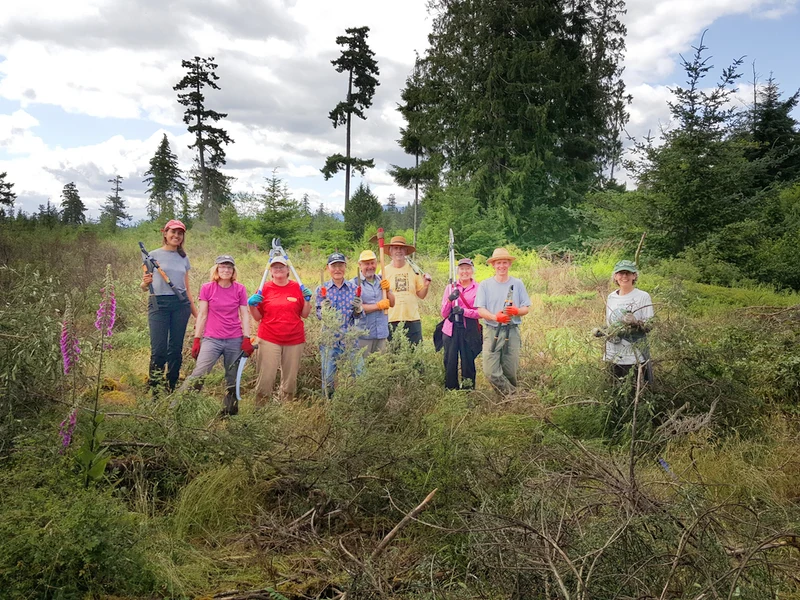In 1923 the name of Village Point on the west side of Denman Island was changed officially to Denman Point. The first name had been in place since the Royal Navy put it on their chart in 1862. At the time of the Navy’s survey a substantial village of the Pentlatch people occupied the point. An early white visitor, Pidcock, described it as it was in 1862, just after it had been depopulated as a result of the smallpox epidemic that swept up the coast from Victoria that year. Robert Brown of the Vancouver Island Exploring expedition also described the village when he camped there in 1864. In her classic account of the pioneer settlers of Denman Island, My Ain Folk (1976), Winnifred Isbister wrote that Denman Island was used as a ‘summer home’ by the Indians who came to the Island on ‘hunting trips’. She nowhere acknowledges the permanent nature of their settlement that was recorded by the first white visitors. This oversight could simply be attributed to the lack of availability, thirty years ago, of the early European accounts, but it does reflect the attitudes of the time towards the First Nations. It is also consistent with the experience of the settlers who first arrived on the Island in the 1870s when the nearest settlement of First Nations people was at Comox, where the remnant of the Pentlatch people from Denman had retreated in 1862. It has been convenient for our western civilization to believe that the first people whom we have displaced didn’t really occupy this land, but were somehow merely ‘summer visitors’.
1 thought on “The Pentlatch People of Denman Island”
Comments are closed.



Good summary of the available literature. Couple of points: the author is correct to note that the seasonal round between village sites is quite possibly a recent adaptation: amongst the Nuu-chah-nulth (‘Nootka’) of the west coast, for instance, archaeological evidence in the past few years has revealed that the seasonal round, presumed for a long while to be a key feature of coastal life, was a relatively recent adaptation. When one considers that the Pentlatch, or at least their ancestral group, existed in the region prior to the existence of local salmon runs and abundant shellfish (both of which came in the post-glacial period), and based on evidence from the deepest layers of the Henry Bay midden and Hornby Island (petroglyphs in particular), subsisted before this on the hunting/harvest of sea mammals (including whales), the notion of a seasonal round appears to be (if present) an adaptation of a previous situation of more permanent settlements based around an earlier sea-mammal hunting culture.
Also, the “owls” on the village poles mentioned by early visitors are most likely depictions of Thunderbirds which have been misapprehended by Europeans, who had no understanding of local belief, and made guesses/assertions on morphology. This mistake is relatively common in the literature of the times: the T-bird held a place of special significance up and down the coast, and is/was far more likely to appear on poles.